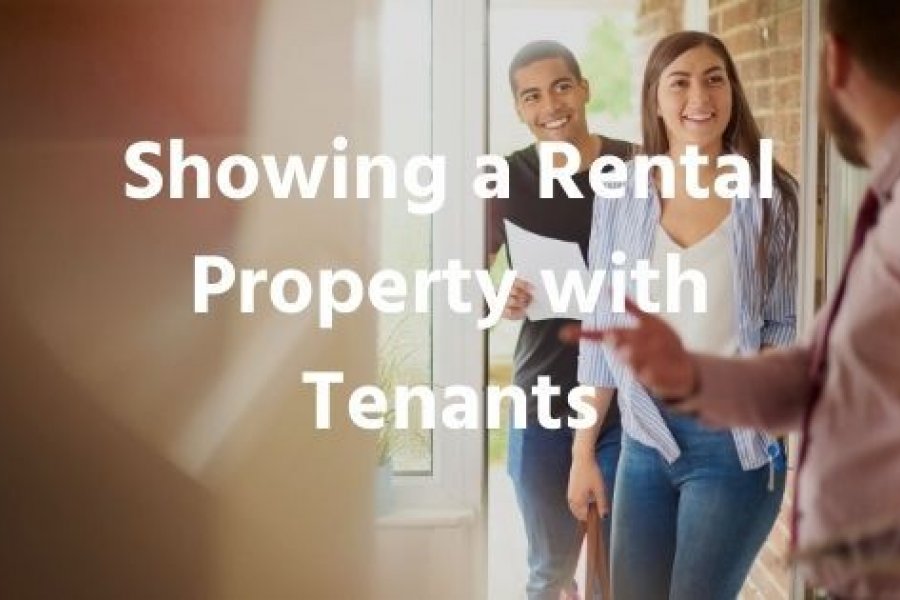
Do you want to conduct a showing of your rental property while still having tenants inside?
Property showings are an integral part of finding qualifying tenants for your rental property. During the showings, prospects can get a better feel for the rental and see whether it’s perfect for them.
As a rental owner, you can ask questions from the visitors in order to learn more about your potential applicants. No amount of information or references is going to be more valuable than direct conversations with those interested in your property.
However, showing your rental property with tenants inside can be a tricky business. You may feel that conducting these showings is rude towards your current tenants. There may be legal implications as well.
In the following paragraphs, we are going to take a good look at some of the top questions that landlords ask when it comes to rental showings and tenants. You’ll learn about the best practices and other useful tips to make everything smooth.
1. Ignore the Open House Concept
The open house is a great showing concept under some circumstances. However, it’s a less than ideal approach if you still have tenants inside the property. In these situations, you are much better off scheduling individual appointments.
Why is that? For starters, open houses take more time. You could easily finish an individual property showing in 15 minutes. Instead, when you have more people coming to the showing at the same time, even 20 minutes won’t do.

Additionally, open houses involve risks that are mitigated during single showings. The top risk concerns your tenant’s personal belongings. When you have a lot of people entering the premises at the same time, someone with malicious intentions could seize the opportunity.
Property showings are good for tenant screening procedures. You can get a better feel of a particular applicant. You can talk with them in a more in-depth fashion. However, hosting open houses means that you may miss the chance of saying more than hellos to some of the applicants.
2. Notify Your Tenants in Advance
Giving your tenants notice in advance is essential. This isn’t only a question of common courtesy. Many states require you to notify your renters a minimum of 24 hours before a property showing. In some areas, you must comply with a 48-hour rule.
In any case, it pays to let your tenants know the moment you have a date and time for the showing. While the legal side of things is crucial, maintaining a respectful and professional attitude towards your landlord-tenant relationship holds importance until the end of the lease.
3. Inquire about Convenient Times
What’s much better than just letting your tenant know about the showings? Ask them about what dates and times would work for them. You don’t need to ask an open-ended question. Instead, give your renters a few options to choose from. That will make things easier for both sides.
4. Reward Welcoming Attitude
Consider rewarding a tenant who shows a cooperative and friendly attitude towards the rental showing situation. For instance, you could purchase a gift certificate that could be used in a local store or restaurant.

However, if you have scheduled many showings, giving rent abatement isn’t a bad idea. This is something that you could consider if you host more than five applicants on separate occasions.
5. Incentivize by Paying for Cleaning
A property showing means that the rental unit needs to be in top shape. This can only be achieved through thorough cleaning so that everything looks sparkling and fresh. It would be quite unfair to expect this cleaning from your tenants.
Your current tenants are more than likely to appreciate getting free cleaning services in their homes. That’s why hiring a professional cleaner on your own expense prior to showings results in a win-win scenario.
6. Refrain from Using Lock Boxes & Signs
You don’t want to intrude on your tenant’s personal life too much. Using a lockbox for your real estate agent is permissible with the right notice, but it’s something that you should prevent from happening as a landlord. Lockboxes may encourage last-minute arrangements by your agent.
Similarly, “For Rent” signs may seem, and tend to be, practical. However, when you still have tenants inside, putting up these signs can start affecting their lives in a negative way. Some passing prospects could start knocking on their door, asking for further information.
Should You Conduct Showings with Tenants Inside?
Giving enough notice means that showing a rental property with tenants still inside is legal. Sometimes, though, you really do have to weigh the pros and cons of these types of rental property showings.

Showing the property at the earliest opportunity reduces the risk of facing a longer vacancy. From a strictly financial point of view, it’s better to conduct as many showings as possible, at the earliest dates possible.
Depending on the tenants you have, showings aren’t always the best idea. With some renters, you may have to conduct extensive cleaning. Even if they aren’t violating any health or safety regulations, your tenants may still quickly clutter the living spaces.
Should you have this type of tenant in your rental unit, multiple showings mean that cleaning procedures need to be taken care of in-between visitors. You may overcome this obstacle by offering attractive incentives for keeping the rooms clean and clutter-free.
In a Nutshell: Showing a Rental Property with Tenants
Are your current tenants leaving soon? Showing the rental unit to prospects helps you cut vacancy time. Since this is a significant intrusion for your tenants, take proactive steps to make things easier for them.
• Offer to pay for professional cleaning services before the showing
• Refrain from hosting open houses
• Don’t use lockbox and “For Rent” signs
• Reward tenants who are understanding and accommodating